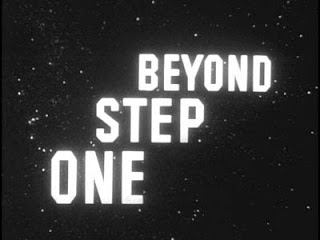 Silence of the Lambs (1991) dir. Jonathan Demme
Silence of the Lambs (1991) dir. Jonathan DemmeStarring: Jodie Foster, Anthony Hopkins, Scott Glenn, Ted Levine, Anthony Heald
****
By Alan Bacchus
There’s no real need to shower ‘Silence of the Lambs’ with any more praise. Its place in cinema and pop culture history is as rock solid as the ‘Wizard of Oz’. I’ve seen it a dozen times, and even catch snippets of it from the numerous A&E HD replays on TV. But this film is not meant to be seen on Sunday television, or with commercials, or in snippets when flipping through channels at the halftime break during televised football games. Nor was it meant to be seen in grossly edited versions for family friendly television – shame on you TBS.
It had been years since I’ve actually devoted adequate time to this picture - a quiet anti-social uninterrupted Saturday night with the lights down and with a crisp high definition Blu-Ray presentation – the next best thing to the theatrical experience.
I knew the film was good, even great, but with my full attention, mood, environment, and viewing quality all aligning properly it becomes a pure transcendental engrossing cinematic experience, nearly as good as seeing it for the first time. And think that a dark (really dark) genre picture released in February could sweep all major categories of the Oscars proves that every once in a while the Academy can get it right.
Director Jonathan Demme achieves cinematic perfection in bringing Thomas Harris’ brooding and wholly disturbing serial killer tale to screen with all its gothic tones and grimy seediness intact. Sure the performances are great, not only the award-winning lead performances but the dozen or so character actors that really make the picture work, and make Hopkins and Foster look so good. Anthony Heald as the loathsome and slimy Chilton, Scott Glenn as the FBI heavy Jack Crawford, Charles Napier as the Tennessee cop over his head with Lecter in his custody, the soothing gentle giant quality of Frankie Faison as Barney, even the two geeky bug experts who help Agent Starling identify the moth are memorable in two small scenes.
It’s easy to dismiss Demme's unflashy camera work - a style not all that different than his other films, most of which were warm-hearted Hal Ashby-esque dramatic-comedies. Demme’s close-ups, many of them centre-framed with the actors looking straight into the camera, helps lock in the audience to the characters – like what Errol Morris does with interrotron interviewing device. Tak Fujimoto’s visual design would seem more natural, and less stylish than say, Michael Mann/Dante Spinotti’s icy-coolness of “Manhunter” or David Fincher/Darius Khondji’s underlit tattered texture of “Se7evn”, but look closely and you’ll find it a precise and controlled look. Careful camera placement is used to subliminally subjugate Starling to both her environment and the other male characters; even his steadycam is used differently. The camera movement isn’t meant to be smooth and steady, instead using longer lenses on a steadycam allows the camera to move unencumbered by dolly track, yet keep the same organic shake as with traditional dolly moves.
Lambs has a remarkable sense of urgency, leapfrogging over ‘Manhunter’ and especially the oft-stolid “Se7en” in terms of pace. Hannibal Lecter’s introduction is a marvel. We all know it’s a great reveal from Starling’s lengthy walk past the grimy prison cells of Lecter’s basement neighbours, but the scene is the climax of a lengthy and expertly directed sequence of shots. As the slippery Dr. Chilton leads Starling through the cavernous hallways of the Hospital his dialogue controls the pace of their movements, editor Craig McKay punctuating each beat with a smash cut to a door opening or door closing, creating a relentless momentum enhanced by Howard Shore's heavy music.
Actually all the technical achievements above are glued together by Howard Shore’s ominous and brooding score. Before scoring films Shore was best known as the original musical director of Saturday Night Live. He then began his feature film career collaborating on all of David Cronenberg’s pictures starting with “The Brood”. Shore’s trademark sound, in what I can only describe as a soundscape of slow, pulsating, ambient noises, which increases in volume and power with the intensity of the emotion, helped Cronenberg achieve the ungodly squirm inducing terror of his great 80’s films. Though he composed a few scores for other directors in the 80’s, it wasn’t until Demme tapped him for ‘Lambs’ did he reach a new level in his career. David Fincher recognized the power of his music and got him to essentially recreate his ‘Lambs’ score for ‘Se7en’. Shore, of course, reached his career pinnacle winning three Oscars for his “Lord of the Rings” music.
I think we take “Silence of the Lambs’ for granted. Horror/thrillers are a genre which encourages stylistic flourishes. And so Demme's muted style makes 'Lambs' an enigma for auteur enthusiasts (me included). Unlike Michael Mann, or David Fincher’s films we can’t track the stylistic or thematic evolution of this film through Demme’s filmography. Even after ‘Lambs’, Demme hasn’t attempted anything like this picture again.
Perhaps the proliferation of its quotable lines, the subsequent exploitation of the Lecter character for more sequels, the numerous DVD releases of the film and it’s healthy supply in Wal-Mart dump bins has overexposed this film. Well, another version is out in the market, a MGM-packaged Blu-Ray Hannibal Lecter Collection, containing ‘Lambs’, ‘Manhunter’, and ‘Hannibal’. At least its in Blu-Ray decently transferred to high definition. The belle of this bunch certainly is 'Silence of the Lambs'.
'Silence of the Lambs' is available on Blu-Ray from MGM Home Entertainment in 'The Hannibal Lecter Collection'



















